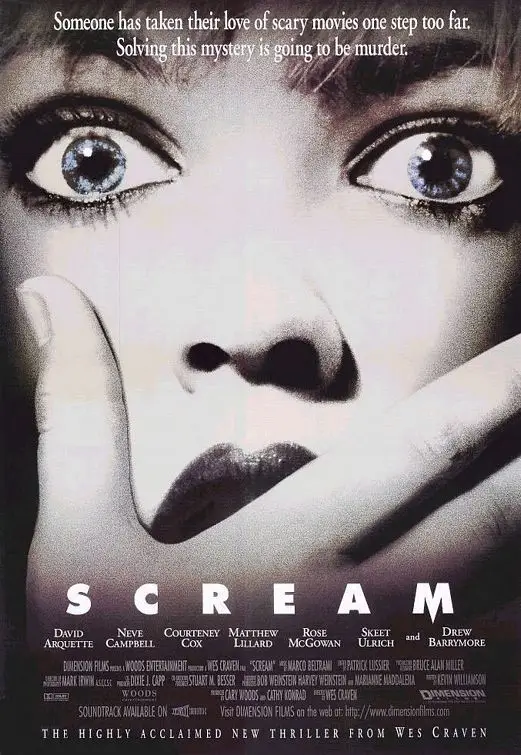Full Transcript
Well, good afternoon, good morning, good evening, wherever you are in the world.
My name is Kevin Smith, and we're here today with another Workshop Wednesday on the docket.
Today we're going to be talking about your editorial promise.
Your editorial promise as a magazine publisher really affects everything that you do.
This is why it's one of the first things that we're covering in our Workshop Wednesday sessions now looking at why the editorial promise matters so much.
It's from your
masthead, from your
cover to your price.
Everything collectively makes up that editorial promise, and it affects every aspect of your magazine, from page to page in your magazine, issue to issue, email to email that you're sending as email broadcast to your subscribers.
Everything about your magazine and delivering on this promise either draws your tribe closer or it pushes them further away and makes them not want to subscribe, not want to buy, not want to interact with you.
So the motivation behind this is, if you want to build a strong, long-term reader base with really strong in deep relationships that have depth to them, you need to nail your editorial promise and actually deliver on it.
Here's what happens when you do, by getting your editorial promise right.
Everybody you're working with, from your contributors to your collaborators and advertisers, your readers, your prospective readers, everybody that you're selling to...
Everybody knows you're a serious magazine and a serious publisher, and you're the right magazine for them to work with or to buy.
What you're going to find is when your reader confidence goes up, when readers know they're in the right place, when that confidence goes up, so does their spending.
For your contributors and partners and so forth, the people that you're working with for content when their confidence goes up, so does their desire to work with you long term and work with you more deeply.
You get the ability to form these types of long term partnerships that can turn into things like workshops and webinars and live conferences, things where they're more likely to be participating with you, buying paid placements, and doing these types of things that you know, like featured stories, brand content, where they know their brand is going to be well represented in your pages.

This all goes back to the editorial promise.
For a lot of people, the question is, what the heck is an editorial promise?
So let's address that before we go further and get into the recipes and exercises.
Whether you're talking about
Vogue, you're talking about a wildlife photographic
Car and Driver, or a
DownBeat magazine, the second you look at any of these covers, that's when that editorial promise begins.
You look at something like these four magazines that we have represented here, and like that as a reader, as a contributor, as an advertiser, you know what these magazines are about, and you're able to say yes or no that this is something that I want to be participating in, and this is something that I want to attach my wagon to as an advertiser or as a prospective reader.
As a reader, you know that wildlife photographic is going to be delivering on the promise of wildlife photography.
It's not going to be about portraiture or architecture or still life photography.
It's all about wildlife.

That's it.
Same thing can be said of
Car and Driver.
You know, if you're picking up the pages of car reading, flipping through
Car and Driver, they're not talking about the latest computer chips, they're not talking about business acquisitions, they're not talking about jazz music.
It's all about cars and drivers.
That's it.
The same sort of ethos then carries through into the editorial copy, into the letter from the publisher.
From all of these different angles, when you look at the magazines, what you're seeing is something that connects with you as a reader, something that, more often than not, when you're talking about an indie magazine, is something that is going to really address the problems that you're having, to help you overcome the challenge challenges, or learn whatever it's that you're hoping to learn.
So let me summarize it this way with these two things, the editorial promise starts with that innate sense that you have about something.
You just look at any of these magazine covers and you know, okay, I'm in the right place.
Let me just sort of pivot here for one second to talk a little bit about film, about movies.
If you're not into horror movies, the second you see that movie poster, you instantly know whether you're in or out.

The same thing for thrillers, the same thing for action adventures or rom coms.
If you're not into the romantic comedy, you know from the movie poster instantly that you're in or you're out.
Second thing is, as you're diving into the magazine, all of your collective collateral, shall we say, as a publisher, all of the stuff in the magazine pages, your letter from the publisher, your advertising, your table of contents, the videos that you've got (if you're using a platform like MagCast, that can actually let you embed videos), all of that stuff, collectively is coming together to give you that affirmation of that first impression you got when you looked at the covers.
So here's your recipe.
This is what you're giving your readers and prospective readers to within your niche, whatever it may be, pick a handful of topics, things that meet the criteria that we talked about in the
choosing your niche video.
If you haven't looked at it, it's available on YouTube, and we'll send a link if you're subscribed into the Workshop Wednesday email, we'll send an email out with links to these videos.
So pick a handful of topics.
Great! Next is look at this not from your perspective, but turn it upside down and look at it from the reader perspective.
What are the beneficial outcomes to you as a reader?
Why am I reading this?

If you're talking about something that's, you know, sort of light reading, sort of fluffy stuff, like in
US Weekly, you'll know that it's delivering on that editorial promise.
The beneficial outcome to you as a reader is that you're getting that sort of mindless entertainment.
If you're talking about a magazine like acquisition, if you see an auto that's all about business acquisitions, the beneficial outcome is your skills as somebody that's looking to purchase businesses are going to go up.
If you're talking about
Calligraphy Crush your skills as a calligrapher and as an artist are going to go up.
Number three in the recipe is you're going to be circling back to this notion of the editorial promise as you start planning each issue.
I emphasize the word planning here, because that's where the execution stems from.
If you're planning things well, things are going to go well when it comes time to execute.
The question to be asking as you start to put together your your initial planning for an issue is, are you just filling pages?
Are you actually delivering so these are the three cornerstones, the three pillars of the recipe of a good editorial promise.
Pick the topics, what's the beneficial outcome, and as you're planning, check it and make sure you're not just filling pages.
So here's our exercise for the week.
First, we're going to ask chatgpt... We're going to tell it you're a world renowned expert in whatever.
What are the 10 things someone wants to gain in studying or learning about x?
Go beyond FAQ type questions and dig deep into the mindset of someone who wants to become an expert in improve their skills in whatever it may be.
So we're going to take this and we're going to use the example of Little League coaching.
So I've got a good old GPT up in my other window here, so we're going to go use little league coaching.
Okay, so we're just going to fill in the blanks, and we're going to say
To improve their skills in Little League coaching.
So there it's.
That's the prompt we're giving into GPT
.
So GPT now is going to give us back the 10 most important things that it feels people who are looking to improve their skills and coaching are going to be interested in so things are
- effective communication
- motivation
- building team cohesion
- teaching fundamentals
- game strategy
- handling pressure
- positive reinforcement
- dealing with conflict
- sportsmanship and continuous improvement and...
- developing a mindset of continuous learning
both for coaches and players.
This sounds like a little league coaching magazine's editorial promise.
This is like that us going from the idea of putting a magazine together about Little League coaching to now having the cornerstone of our editorial promise.
So now next thing in our exercise, we're going to ask GPT please summarize each of these topics as bullet points so I can transcribe them to a postcard.
So some of these are a little bit long, so we're going to add, we're going to add the word as concise bullet points, and we're even going to say short, concise.
Technology that's just not the editorial promise that the magazine has made that starts with its cover, goes through the letter from the editor and on through all the pages of copy.
Same thing for
DownBeat.
You're not going to see ads for camera gear or ads for high fashion women's shoes in
DownBeat magazine, because it just doesn't have a place in the editorial promise.
So one last note here of the day, I just want to invite everybody.
If you have not yet registered for a tour of MagCast, you can go to
magcast.co/Tour/ and register for a tour with me to see behind the scenes of what the MagCast platform looks like.
If you want to attend our upcoming webinar on magazine publishing, it's at the end of the month.
You can go to
magcast.net.
That's magcast.net and register for the webinar.
It's free, and everybody's welcome to attend.
On that note, I'm going to wrap up today's session, and we'll see on the inside.




